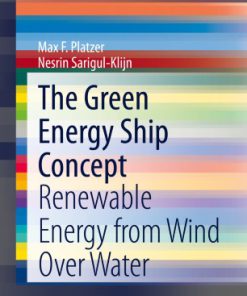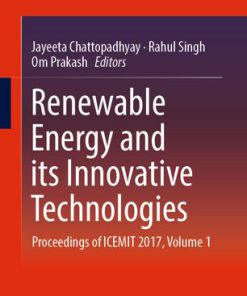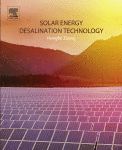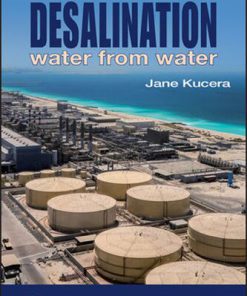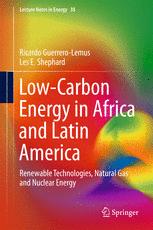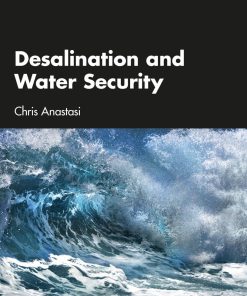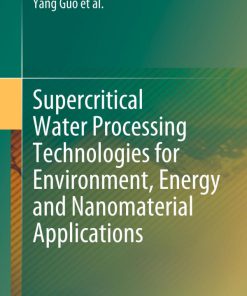Renewable energy technologies for water desalination 1st Edition by Hacene Mahmoudi, Noreddine Ghaffour, Mattheus Goosen, Jochen Bundschuh ISBN 9781317287438 1317287436
$50.00 Original price was: $50.00.$25.00Current price is: $25.00.
Renewable energy technologies for water desalination 1st Edition by Hacene Mahmoudi, Noreddine Ghaffour, Mattheus Goosen, Jochen Bundschuh – Ebook PDF Instant Download/Delivery: 9781317287438 ,1317287436
Full download Renewable energy technologies for water desalination 1st Edition after payment
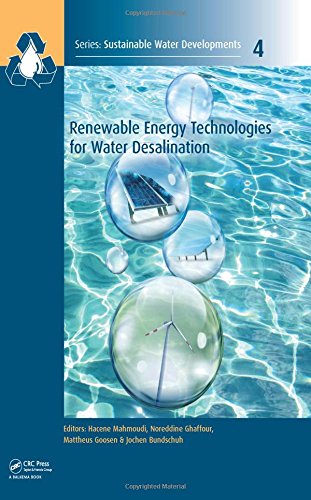
Product details:
ISBN 10: 1317287436
ISBN 13: 9781317287438
Author: Hacene Mahmoudi, Noreddine Ghaffour, Mattheus Goosen, Jochen Bundschuh
Renewable energy technologies for water desalination 1st Edition Table of contents:
1. A critical overview of renewable energy technologies for desalination
1.1 Introduction
1.2 Worldwide desalination capability and progress in renewable energy systems
1.3 Economics and improvement of thermal energy storage and backup systems
1.4 Combined renewable-energy-driven low-energy desalination processes
1.5 Market potential, environmental concerns, and regulatory and socioeconomic issues
1.6 Concluding remarks
2. The use of solar energy for small-scale autonomous desalination
2.1 Introduction
2.2 Solar multi-effect distillation case study: Plataforma Solar De Almería
2.2.1 Description of the system
2.2.2 Desalination system operation
2.2.2.1 Low-pressure steam as the thermal energy source
2.2.2.2 Hot water as the thermal energy source
2.2.3 Operational conclusions
2.3 Photovoltaic reverse osmosis case study: Ksar Ghilène plant
2.3.1 Introduction
2.3.2 Desalination plant operation
2.3.3 Analysis of the PV plant performance
2.3.4 Operational conclusions
3. Application of solar nanophotocatalysis in reverse osmosis pretreatment processes
3.1 Introduction
3.2 Reverse osmosis and feedwater pretreatment processes
3.3 Photocatalysis and oxidation of pollutants
3.4 Solar photo catalytic processes and removal of organic and inorganic compounds from water and air
3.5 Omani case study of reverse osmosis pretreatment using solar nanophotocatalysis
3.5.1 Batch reactor studies with TiO2
3.5.2 Batch reactor studies with TiO2 recirculation
3.5.3 Continuous reactor studies with TiO2 in suspension and in thin film
3.5.4 Effectiveness of combination of photocatalysts and photo-Fenton reagent in reduction of TOC in reactor studies
3.6 Concluding remarks
4. Metal oxide nanophotocatalysts for water purification
4.1 Introduction
4.2 Iron oxide nanomaterials
4.3 Graphene oxide-based nanocomposites
4.4 Iron oxide nanomaterials in wastewater treatment
4.4.1 Adsorptive technologies
4.4.1.1 Iron oxide as a nanosorbent for heavy metals
4.4.1.2 Iron oxide as nanosorbents for organic contaminants
4.4.2 Photocatalytic technology
4.4.2.1 Preparation of iron oxide/graphene-based nanomaterials
4.4.2.2 Properties of α-Fe2O3 nanoparticles
4.4.2.3 α-Fe2O3 nanoparticles/graphene nanocomposites from M-H treatment using HMT and PEG
4.5 Concluding remarks
5. Wind technology design and reverse osmosis systems for off-grid and grid-connected applications
5.1 Introduction
5.2 Wind energy technology overview
5.2.1 Wind technology history
5.2.2 Wind technology description
5.2.2.1 Technical description of modern wind turbines
5.2.2.2 Wind turbine classification
5.2.2.3 Wind turbine capacity
5.2.3 Wind technology progress
5.2.4 Wind market share
5.2.5 Cost of wind energy
5.3 Wind desalination combinations
5.3.1 Wind and MVC combination
5.3.2 Wind and ED/EDR combination
5.3.3 Wind and RO combination
5.3.3.1 Off-grid wind reverse osmosis
5.3.3.2 On-grid wind reverse osmosis
5.4 Wind desalination market
5.5 Conclusions
6. Geothermal energy/desalination concepts
6.1 Introduction
6.2 Geothermal desalination concepts
6.3 Low-enthalpy direct hot water use desalination systems
6.3.1 Wet-rock harvested seawater or brackish water and adsorption desalination (AD)
6.3.2 Wet-rock harvested seawater or brackish water and membrane distillation (MD)
6.3.3 Wet-rock harvested seawater or brackish water and humidification-dehumidification desalination
6.4 Low-enthalpy hybrid systems: linking solar and geothermal systems
6.4.1 Combined-cycle solar- and geothermal-powered AD
6.4.2 Combined-cycle solar- and geothermal-powered MD
6.4.3 Solar-powered AD or MD with thermal aquifer storage
6.4.4 Co-generation of electricity and desalination using low-enthalpy geothermal systems
6.5 High-enthalpy geothermal desalination using dry steam or hot water directly
6.5.1 Wet-rock-heated water for multi-stage flash distillation
6.5.2 Wet-rock-heated water for multiple-effect distillation
6.5.3 Wet-rock-heated water for thermal vapor compression
6.6 High-enthalpy hybrid geothermal-produced electricity and desalination systems
6.6.1 Hot dry rock heat reservoirs: methods of sustainable heat harvesting
6.6.2 Linking geothermal electricity generation with MSF or MED systems
6.6.3 Linking electricity generation and multiple desalination processes
6.6.4 The geothermal electricity generation and desalination “campus” concept
6.7 Life-cycle cost analysis combined with greenhouse gas emissions
6.8 Summary and conclusions
7. Fuel cells as an energy source for desalination applications
7.1 Introduction
7.2 Energy consumption in desalination
7.3 Integrated and hybrid systems: fuel cells with desalination
7.3.1 Integration with reverse osmosis desalination units
7.3.2 Integration with thermal multi-stage flash desalination units
7.3.3 Integration with membrane distillation desalination units
7.3.4 Integration with multi-effect distillation units
7.3.5 Integration with multi-effect boiling desalination units
7.3.6 Integration with mechanical vapor compression desalination unit
7.3.7 Other examples of fuel cell integration with desalination units
7.4 Energy, environmental and economic factors
7.5 Concluding remarks
8. Wind turbine electricity generation for desalination: design, application and commercialization
8.1 Introduction
8.2 Installed wind capacities and the importance of turbine configuration and rotor design
8.2.1 Global installed wind capacities and commercialization of the renewable energy industry
8.2.2 From sailing ships and windmills to electricity generation
8.2.3 Influence of wind turbine configuration and control strategy on efficiency
8.2.4 Wind turbine rotor design and momentum theory
8.3 Fluid-structure interactions and improving power efficiency, lifespan and stability during wind turbine operation
8.4 The economics of wind technology and desalination: future research directions
8.5 Concluding remarks
9. A critical review of fuel cell commercialization and its application in desalination
9.1 Introduction
9.2 The need to reduce energy consumption in the desalination sector
9.3 Development and commercialization of fuel cells and how this may help the desalination industry
9.3.1 Markets and challenges in fuel cell commercialization
9.3.2 Fuel cell efficiencies and manufacturer rating versus real-world performance
9.3.3 Automotive fuel cells and the need to meet cost, performance and durability criteria
9.3.4 Influence of socioeconomic growth and industrial competition on the desalination industry
9.4 Concluding remarks
10. Wireless networks employing renewable energy sources for industrial applications: innovations, trade-offs and operational considerations
10.1 Introduction
10.2 Reducing energy requirements by network configuration planning
10.3 Managing the requirements of wireless resource allocation
10.4 Powering the network by utilising renewable energy sources
10.4.1 Solar energy
10.4.2 Wind energy
10.5 Energy harvesting as an alternative in powering the network
10.5.1 Radio frequency energy harvesting
10.5.2 Piezoelectric energy harvesting
10.6 The limits and trade-offs of green wireless networks and industrial applications
10.7 Concluding remarks
11. Fuel-cost apportionment and desalination technology selection based on exergy analysis
11.1 Introduction and background
11.2 An exergetic analysis of a dual-purpose plant
11.3 Primary fuel-cost apportionment
11.4 Desalination method selection based on system efficiency
11.5 Summary
12. Achieving food security in the desalination age
12.1 Introduction
12.1.1 Defining food security
12.1.2 Defining water security
12.1.3 Defining sustainable desalination
12.2 Food security and desalination in action – a GCC perspective
12.3 Drivers affecting food security
12.4 Human health – why we need food security
12.5 Solutions – working towards food security
12.5.1 Biodiversity approaches
12.5.2 Policy mechanisms
12.5.3 Leadership, coordination and strategy
12.5.4 Virtual water
12.5.5 Trade
12.5.6 Efficiency
12.6 Conclusion and recommendations
13. Renewable energy policy and mitigating the risks for investment
13.1 Introduction
13.2 Obstacles to deployment and associated investment risks
13.2.1 Barriers for deployment of renewable energy projects in the Middle East & North African region
13.2.2 Risk for investment in renewable energy technology
13.3 The case study method for assessing barriers & risks
13.4 Case study results on mitigating investment risks
13.4.1 Risk perceptions of investors
13.4.2 How do risk perceptions reflect the financing of renewable energy projects?
13.4.3 Impacts of investment on socioeconomic development
13.5 Concluding remarks
14. Integrating renewable energy sources into smart grids: opportunities and challenges
14.1 Introduction
14.2 Opportunities
14.2.1 Seamless integration of renewable energy sources and ushering in a new era of consumer choice
14.2.2 Exploiting the use of green building standards to help “lighten the load” and enabling nationwide use of plug-in hybrid electric vehicles
14.2.3 Making large-scale energy storage a reality
14.3 Challenges
14.3.1 Storage, communication and integration with the current power grid
14.3.2 Security and interoperability
14.3.3 Standardizing the smart grid
14.3.4 Electric vehicles
14.4 Conclusions
15. Current trends and future prospects of renewable energy-driven desalination (RE-DES)
15.1 Introduction
15.2 Assessment of current trends in RE-DES technologies
15.2.1 Water demands up to 1000 m3 day−1
15.2.2 Water demands from 1000 m3 day−1 to 10,000 m3 day−1
15.2.3 Water demands greater than 10,000 m3 day−1
15.3 Future prospects for RE-DES technology development
15.3.1 Desalination plants based on batch operation
15.3.2 Development of brine concentration and crystallization based on membrane distillation (MD)
15.3.3 Emergent processes and disruptive concepts
15.3.4 Gradual-capacity RO desalination plants
15.3.5 Innovative configurations of RO desalination plants
15.3.6 Hybrid desalination plants
15.3.7 Design for process integration aimed at promoting socioeconomic development
15.4 Market opportunities
15.4.1 Sustainable solutions based on renewable energies for rural communities in developing countries
15.4.2 Sustainable solutions based on renewable energies for developed countries, islands, isolated communities and resorts
15.4.3 Sustainable solutions based on existing desalination plants
Subject index
People also search for Renewable energy technologies for water desalination 1st Edition:
renewable energy sources vs nonrenewable
renewable energy sources in india
renewable energy sources in the philippines
renewable energy sources in hindi
Tags:
Hacene Mahmoudi,Noreddine Ghaffour,Mattheus Goosen,Jochen Bundschuh,Renewable energy,technologies,water desalination
You may also like…
Engineering - Energy & Power Resources
The Green Energy Ship Concept: Renewable Energy from Wind Over Water Max F. Platzer
business
Absorption Heating Technologies Efficient Heating Heat Recovery and Renewable Energy Wei Wu
Engineering
Solar Energy Desalination Technology 1st edition by Hongfei Zheng ISBN 0128094222 9780128094228
Engineering
The Water-Food-Energy Nexus: Processes, Technologies, and Challenges 1st Edition I.M. Mujtaba
Engineering - Environmental




